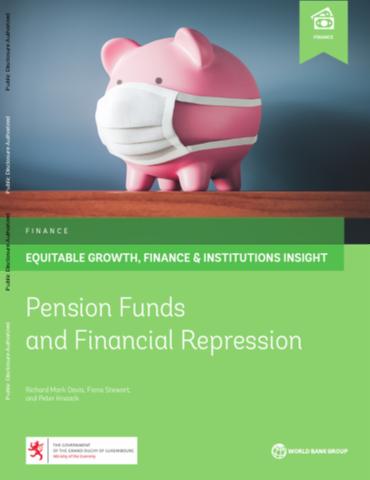
Piggy’s Trading &Investing Tips PIGGY notes that financial repression describes measures by which governments channel funds from the private sector to themselves as a form of debt reduction.
The overall policy actions result in the government being able to borrow at extremely low interest rates, obtaining low-cost funding for government expenditures.
This action also results in savers earning rates less than the rate of inflation and is therefore repressive.
The concept of financial repression was first introduced in 1973 by Stanford economists Edward S. Shaw and Ronald I. McKinnon to disparage government policies that suppressed economic growth in emerging markets.
It is a notion that a set of government regulations, laws, and other non-market restrictions prevent the financial intermediaries of an economy from functioning at their full capacity.
It is the direct government intervention that alters the equilibrium reached in the financial sector of a country.
Financial repression has been applied in numerous forms, such as ceilings on interest rates, directed credits to certain industries, or constraints on the composition of bank portfolios.
Financial repression is typically accompanied by additional restrictions on financial activity, such as controls on international capital movements aimed at reducing the alternative investment opportunities available to savers.
- Chamisa under fire over US$120K donation
- Mavhunga puts DeMbare into Chibuku quarterfinals
- Pension funds bet on Cabora Bassa oilfields
- Councils defy govt fire tender directive
Keep Reading
Economists have commonly argued that financial repression prevents the efficient allocation of capital and thereby impairs economic growth. Reinhart and Sbrancia indicate that financial repression features:
Caps or ceilings on interest rates;
Government ownership or control of domestic banks and financial institutions;
Creation or maintenance of a captive domestic market for government debt;
Restrictions on entry to the financial industry; and
Directing credit to certain industries
The key reason for the government to implement financially repressive policies is to control fiscal resources.
By having a direct control over the financial system, the government can funnel funds to itself without going through legislative procedures and more cheaply than it could when it resorts to market financing.
Financial repression also takes the form of government directives for banks to allocate credit at subsidised rates to specific firms and industries to implement industrial policy.
Forcing banks to allocate credit to industries that are perceived to be strategically important for industrial policy ensures stable provision of capital rather than leaving it to decisions of disinterested banks or to efficient securities markets.
It is also more cost effective than going through the public sector’s budgetary process.
The Japanese Ministry of Finance (MOF) is a typical example of government’s micromanagement of financial industry.
The extreme example of direct state control of banks is nationalisation of banks as was observed in Mexico in the 1980s, when the government nationalised all the banks to secure public savings.
A good example in Zimbabwe are agricultural financing mechanisms such as Command Agriculture that give political mileage to the government but are uneconomic for banks given the high levels of Non-Performing Loans (NPLs) within the agricultural sector.
This has been the reason why the Reserve Bank of Zimbabwe set up the Zimbabwe Asset Management Company (Zamco) in July 2014 as part of holistic measures to deal with problem of rising non-performing loans (NPLs) in the banking sector.
On another note, capital controls serve as restrictions on the inflows and outflows of capital and are also a financially repressive policy.
Despite their virtues, the use of capital controls can involve costs. Because of their uncompetitive nature, capital controls increase the cost of capital by creating financial autarky; limits both domestic and foreign investors’ ability to diversify portfolios; and helps inefficient financial institutions survive.
All in all, financial repression policies have also increased the risk profile of countries such as Zimbabwe, thereby limiting FDI inflows that are critical for economic development.
Piggy believes that the negative effect of financial repression on economic growth does not automatically mean that countries should adopt a laissez-faire stance on financial development and remove all regulations and controls that create financial repression.
Many developing countries that liberalised their financial markets experienced crises partly because of the external shocks that financial liberalization introduces or amplifies.
Financial liberalisation can create short-term volatility despite its long-term gains (Kaminsky and Schmukler, 2002).
Also, because of market imperfections and information asymmetries, removing all public financial regulations may not yield an optimal environment for financial development.
An alternative to a financially repressive administration would be a new set of regulations to ensure market competition as well as prudential regulation and supervision.
In conclusion, while ill-managed and -timed financial reforms can induce an economic crisis, financial reforms are a critical pillar in the economic growth and transformation strategy of a developing nation.
In this regard, Zimbabwe needs to deepen its financial sector reforms that result in a broad spectrum of financial products to meet the demands of the investing public.
The stock market is one avenue that investors can have access to an array of investment assets and themes.
- Get more tidbits on the stock market by joining a PiggyBankAdvisor WhatsApp Group (+263 78 358 4745).
- Matsika is the head of research at Morgan & Co, and founder of piggybankadvisor.com. — [email protected]/ [email protected] or +263 783 584 745.











